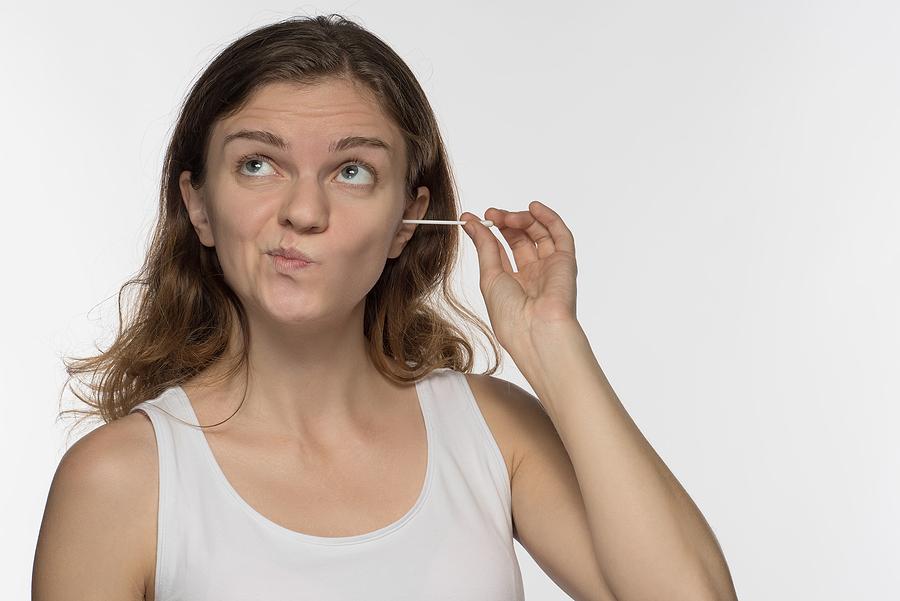While earwax serves a protective function for our ears, excess buildup can lead to discomfort and even temporary hearing loss. So how do you know when to clean your ears, and how to do so safely?
Understanding the Ear’s Self-Cleaning Mechanism
Before delving into cleaning methods, let’s take a look at the ear’s natural self-cleaning mechanism. The ear produces cerumen, commonly known as earwax, which acts as a protective barrier against dust, debris, and microbial invaders. This self-regulating system protects the middle ear. When the earwax traps dust or other particles, it dries out and starts to move out of the ear canal, aided by jaw movements from eating, talking, and yawning.
Signs of Excessive Earwax
While earwax is generally beneficial, excessive buildup can lead to various symptoms, including:
- Hearing Loss: Accumulated earwax can block the ear canal, causing temporary hearing loss or a feeling of fullness in the ear.
- Earache or Discomfort: Excessive earwax can lead to discomfort, earache, or a sense of pressure in the ears.
- Tinnitus (Ringing in the Ears): In some cases, impacted earwax may contribute to the perception of ringing, buzzing, or hissing sounds in the ears.
- Dizziness: Severe blockages may affect the inner ear, leading to dizziness or imbalance.
Safe Methods for Cleaning Your Ears
Do your ears need cleaning? Here are some safe ways to clean your ears:
- Earwax Softening Drops: Over-the-counter ear drops designed to soften earwax can be a safe and effective method for addressing mild cases of earwax buildup. Follow the instructions on the product and allow the drops to work for a few days before attempting to clean the ears.
- Warm Water Rinse: Gently flushing the ear with warm water can help dislodge softened earwax. Use a bulb syringe or a specialized earwax removal kit for this purpose. Tilt your head to the side and allow the water to enter the ear, then tilt your head in the opposite direction to let the water drain out.
- Professional Earwax Removal: If home methods prove ineffective or if you experience persistent symptoms, we recommend professional help. Earwax removal by a hearing health specialist or doctor ensures a safe and thorough cleaning without risking damage to the ear canal or eardrum.
Precautions and Tips for Safe Ear Cleaning
Now let’s look at what not to do:
- Do NOT Insert Objects into the Ear Canal: One of the most common misconceptions is that inserting objects like cotton swabs or hairpins into the ear canal is an effective method of cleaning. However, this can push earwax deeper, risking damage to the delicate structures of the ear and potentially trapping earwax against the eardrum.
- Do Not Overclean: It’s crucial to recognize that ears are self-cleaning, and excessive cleaning can disrupt the natural balance. Intervene only when necessary and avoid cleaning the ears too frequently.
- Do Not Use Sharp Objects: Never insert sharp objects, such as hairpins or paper clips, into the ear canal. This can cause injury, push earwax deeper, and increase the risk of infection.
- Avoid Cotton Swabs: While cotton swabs are commonly used for ear cleaning, they can push earwax deeper and pose a risk of injury. If you use cotton swabs, only use them to clean the outer ear, and don’t put them in the ear canal.
When to Consult a Professional
While you may be able to safely clean your ears at home, certain situations may need professional support:
- Persistent Symptoms: If symptoms such as hearing loss, pain, or dizziness persist despite home care efforts, consult a healthcare professional.
- History of Ear Surgery or Ear Problems: Individuals with a history of ear surgery or chronic ear problems should seek professional guidance for ear cleaning to avoid complications.
- Impacted Earwax: If earwax is impacted against the eardrum, professional removal is necessary to prevent damage to the delicate structures of the ear.
- Ear Drainage or Infection: If there is drainage from the ear, signs of infection, or a perforated eardrum, consult a healthcare professional before attempting any ear cleaning at home.
Visit Us for Professional Earwax Removal
By following these guidelines, you can safely clean your ears. If you have any doubt about cleaning or you have persistent symptoms, visit us for professional earwax removal.

